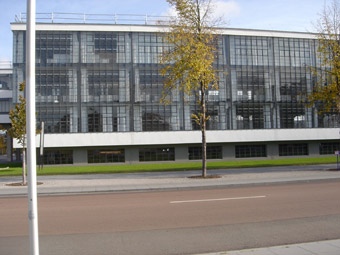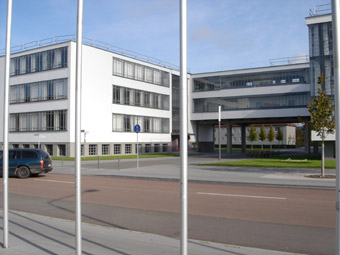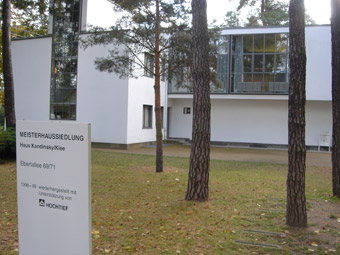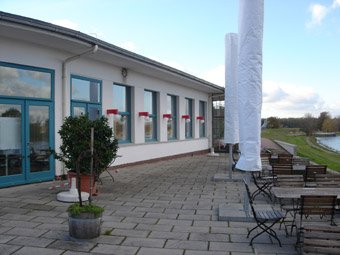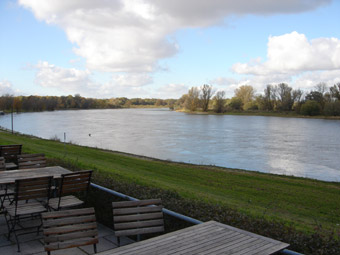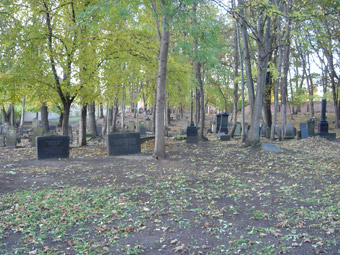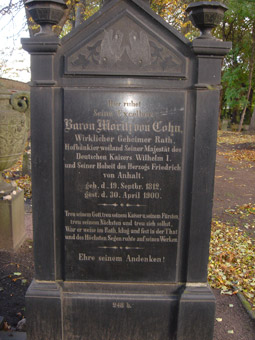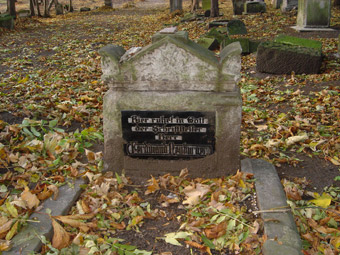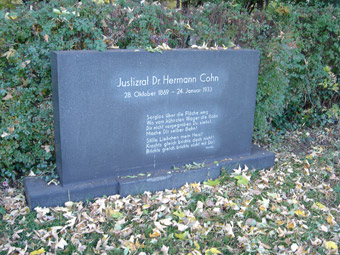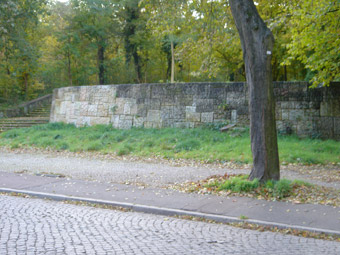DessauI had read about the Bauhaus School and seen an exhibit on it in Tel-Aviv, which has an enormous number of Bauhaus buildings. When I heard I was going to read in Dessau, sponsored by the Moses Mendelsohn Foundation, I was thrilled, and spending time at the Bauhaus headquarters, reconstructed after heavy damage in W.W. II, was wonderful. The design elements of line and color and glass are more complicated than they look and it was eerie to walk the halls where geniuses had been and even eat lunch in their "mensa." I also spent time in the studios where Klee and Kandinsky painted while there. My affable and enthusiastic host, Bernd Ulbrich, a free-lance historian, didn't speak much English so German was on the menu all day.
There's a darker side to Dessau. The Jewish cemetery dating back to the early 1600s was desecrated by the Nazis, some of the stones used to build a now unmarked platform where Nazi officials could review parades, the rest tumbled or destroyed. It took the Soviets to restore some order at the cemetery, where I spent time communing with the graves. Was it sentimental to run my hand around one, imagining the flames of that night which destroyed the chapel? I don't know, but I did, and I also put stones on tombstones as is the Jewish tradition.
Back to German Tour 2010 main page
|
